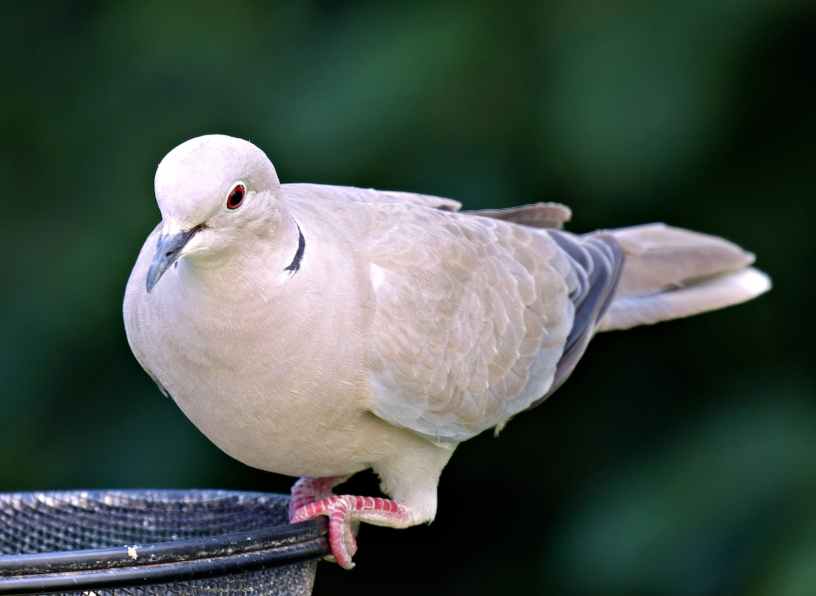Easily identifiable by its pale grey-brown body, its thin black collar and its monotonous triple coo call – not unlike the call of the wood pigeon – the collared dove is very common on farms and in suburban gardens. It is about half the size of the wood pigeon and two thirds the size of a stock dove. It can live up to 10 years.
Easily identifiable by its pale grey-brown body, its thin black collar and its monotonous triple coo call – not unlike the call of the wood pigeon – the collared dove is very common on farms and in suburban gardens. It is about half the size of the wood pigeon and two thirds the size of a stock dove. It can live up to 10 years.
Collared dove pairs mate for life. Their nest is a small crude platform of twigs and sturdy leaves, generally well up in a tree but sometimes on building ledges. Two white eggs are laid and there are usually two or three broods from April to September – but sometimes more, because they will breed all year if food is available and the weather is good enough. Incubation is about 14 days by both parents and the young are fed by both parents. They fly after about another 18 days. Food is grain, seeds, buds and shoots from the ground – plus of course anything you put on a bird table or feeder.
There are more than 900,000 breeding pairs of collared doves in the UK, and the most surprising story behind this successful bird is how it came to be here. The first collared dove spotted in England was at Manton in Lincolnshire in 1952. Twitchers rushed to see what they thought was a rare migrant to our shores – but this was no seasonal migration, because the bird did not go back to its Balkan roots. Instead, it was the first of a massive westerly move by collared doves. They found the conditions here so favourable all year round that more and more of them made the trip over the North Sea – they gradually advanced over the whole country at a rate of about three kilometres a year, and have now reached Ireland. We don’t know what triggered the original and vigorous range extension or why they settled here and switched to a sedentary lifestyle. If they like it so much, why haven’t other similar species followed? The expansion has slowed significantly over the past few years, so perhaps they are working to a target of one million pairs. If so they are very close to it.
Peter Land
